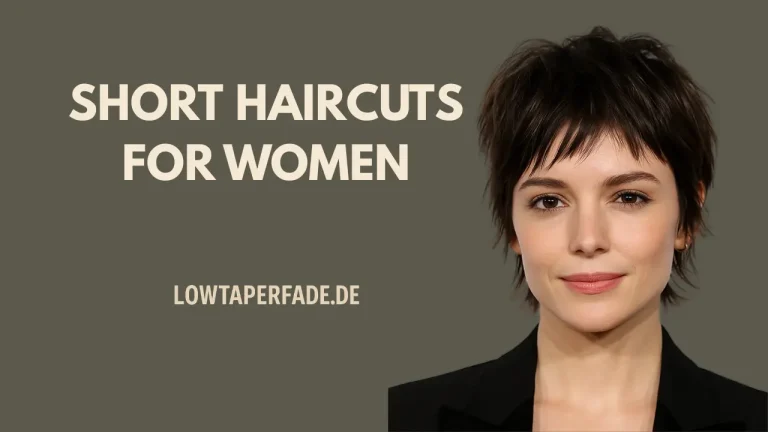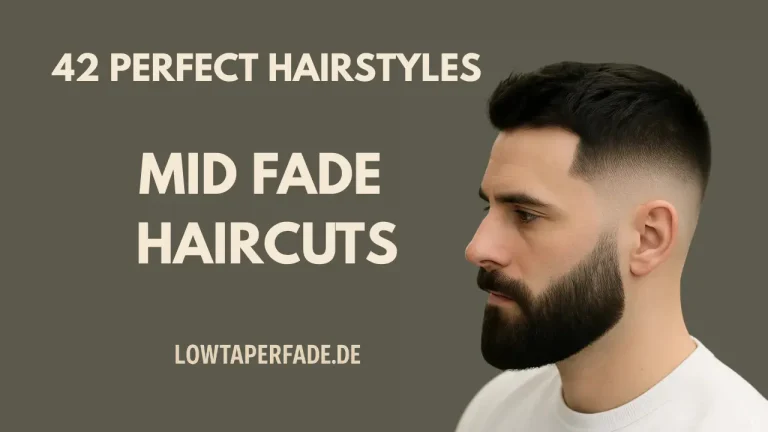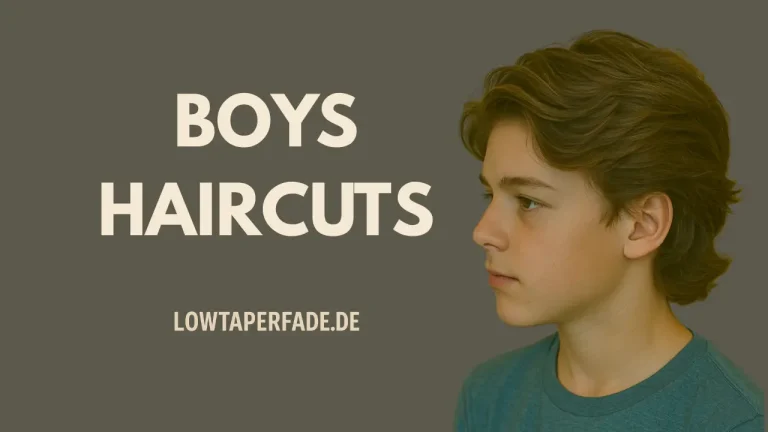Low Fade vs Mid Fade vs High Fade: Best Look in 2025

Fades have become one of the most popular haircut styles across the globe. Whether you’re sitting in a barbershop in New York, London, or Tokyo, chances are you’ll hear someone asking for a low fade, mid fade, or high fade. Each of these options delivers a unique aesthetic, offering different levels of boldness and versatility. But how do you know which fade is right for you? Let’s break down the differences, benefits, characteristics, and more, helping you make the perfect grooming choice.
What Is a Fade Haircut?
A fade haircut involves gradually tapering the length of the hair down the sides and back of the head, blending into the skin or shorter hair near the neckline. It provides a clean, polished look that works well with various top styles — from classic comb-overs to messy curls. Fades come in three primary types: low, mid, and high.
Beyond these three main fade types, several variations exist to suit different tastes and styles. The skin fade blends hair down to the scalp, creating a sharp, shaved finish. The drop fade curves the fade downward behind the ear for a more contoured shape. A burst fade circles around the ear, flaring out like a burst of light, and the taper fade offers a more conservative, gradual fade focused on the sideburns and nape. These styles can be combined with low, mid, or high fades to create a personalized, modern haircut tailored to your look.
What is Low Fade?
A low fade haircut starts just above the ear and curves down toward the neckline. It leaves more hair on the sides, making it a subtle and softer style. The gradual blending creates a smooth transition between hair lengths, which works well with all hair textures and is especially flattering for conservative or professional settings.
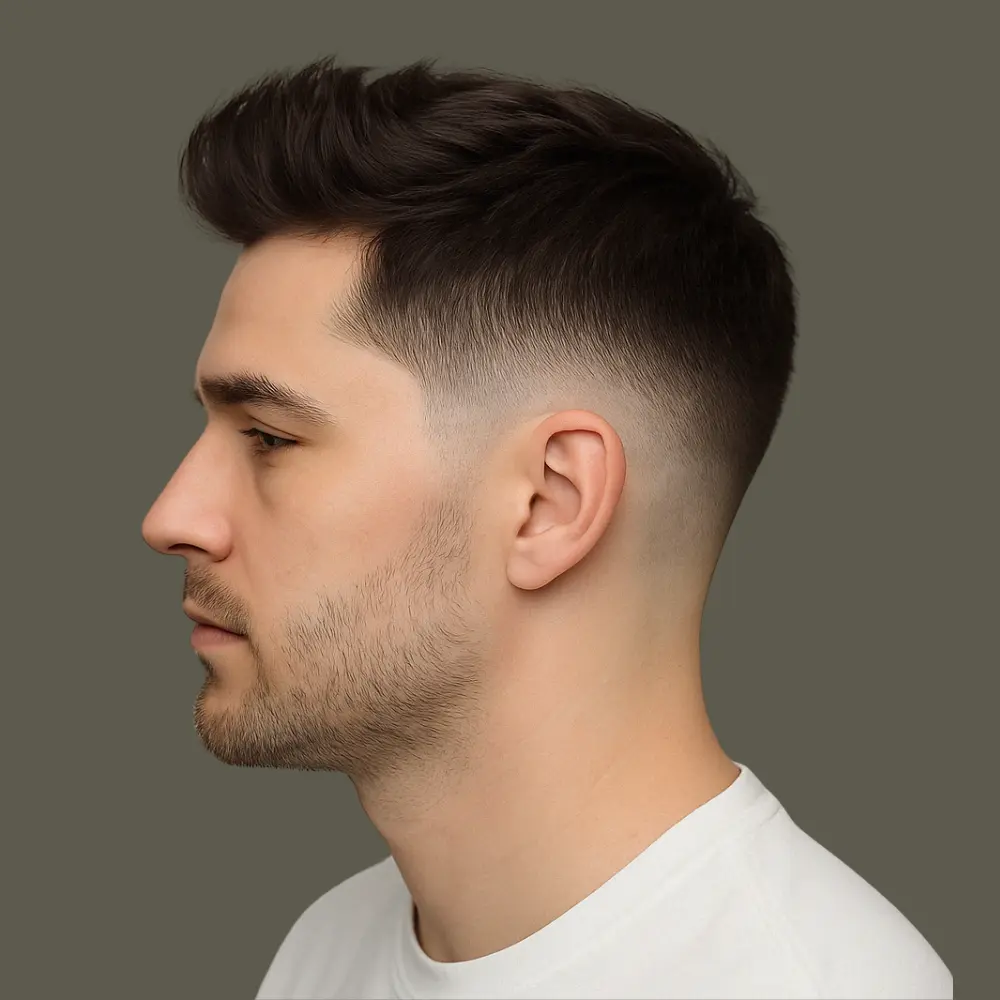
This type of fade is a top choice for men who want to keep things classy without drawing too much attention to the haircut itself. It’s ideal for everyday wear, whether you’re in the office, heading to a formal event, or keeping things casual. The low fade’s versatility means it suits nearly all age groups, and its subtlety makes it easier to maintain while still offering a modern, groomed appearance.
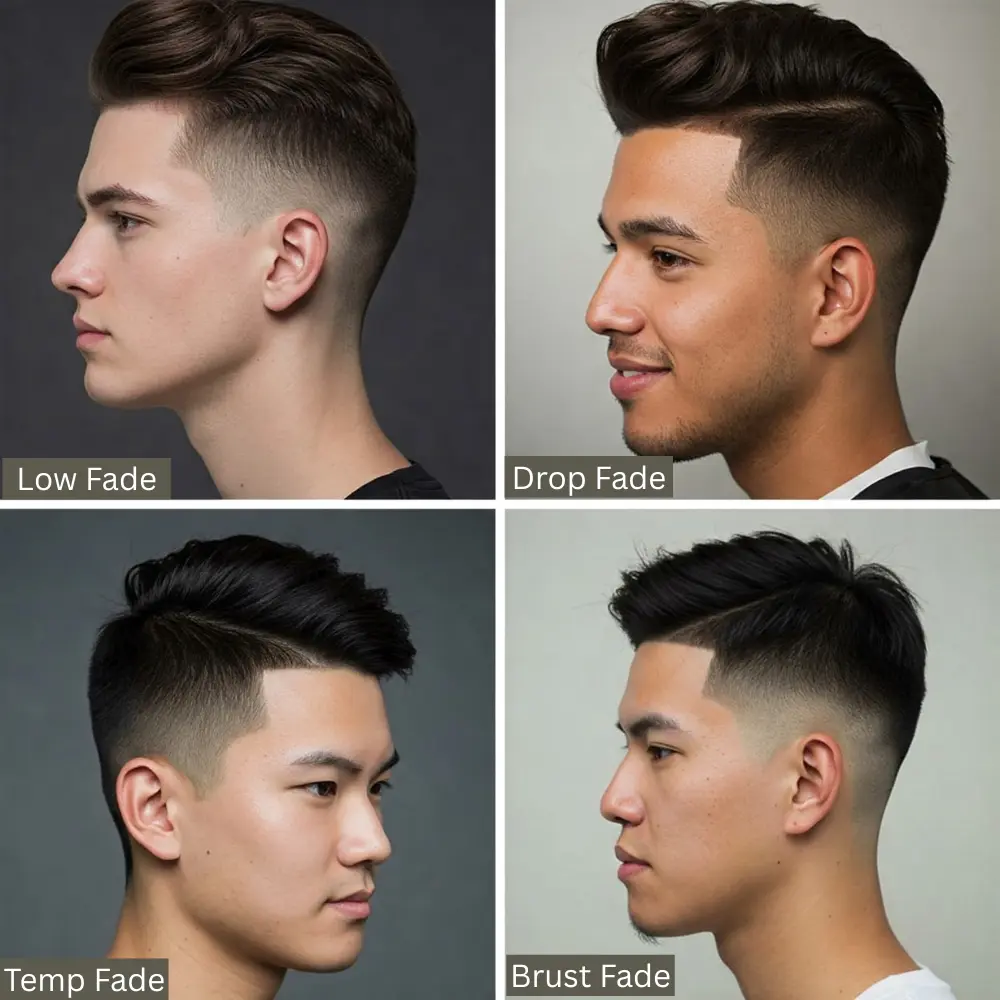
Low Fade Characteristics:
Low Fade Haircut Best For:
Low Fade Haircut Pairs Well With:
What is Mid Fade Haircut?
A mid fade haircut begins between the temple and the ear. It offers a balanced blend of boldness and subtlety, making it an ideal choice for people who want a noticeable yet versatile cut. This fade is a go-to for barbers and clients because it works well with most hairstyles and adds structure to the face.

This cut is especially favored by younger men or those looking to modernize their overall appearance without going for a full skin fade. It complements a wide range of face shapes and can easily transition from a casual daytime style to a more polished, evening-ready look. Its adaptability is one of the key reasons it continues to trend year after year.
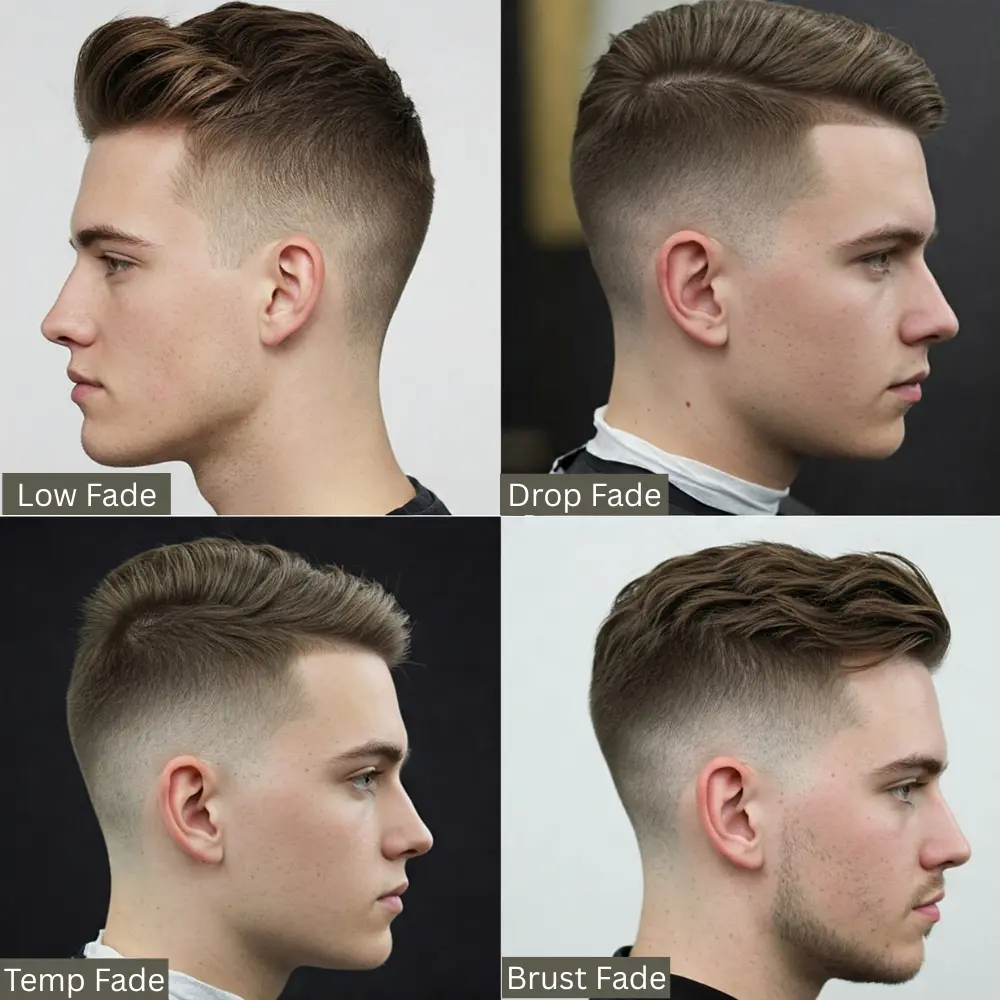
Mid Fade Haircut Characteristics:
Mid Fade Haircut Best For:
Mid Fade Haircut Pairs Well With:
What is High Fade Haircut?
A high fade starts high on the head, usually around the temples or forehead line, and quickly tapers into the skin. It delivers a dramatic, edgy appearance and puts more focus on the top of the head. High fades require more frequent upkeep but offer standout style.
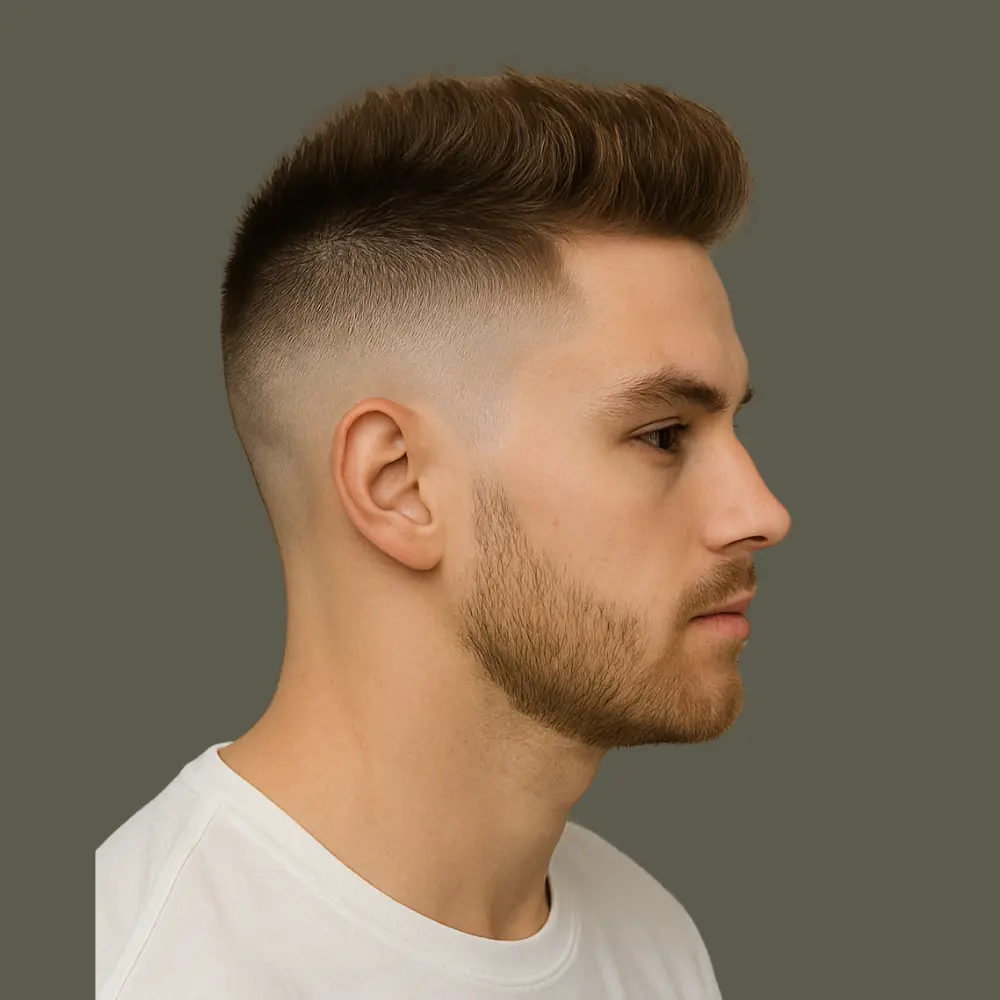
Often associated with street style and high fashion, the high fade is ideal for men who want to turn heads. It works best with strong, angular facial features and is often combined with detailed hair designs or creative top styles. If you’re someone who embraces boldness and is ready to maintain your look regularly, the high fade could be your signature cut.
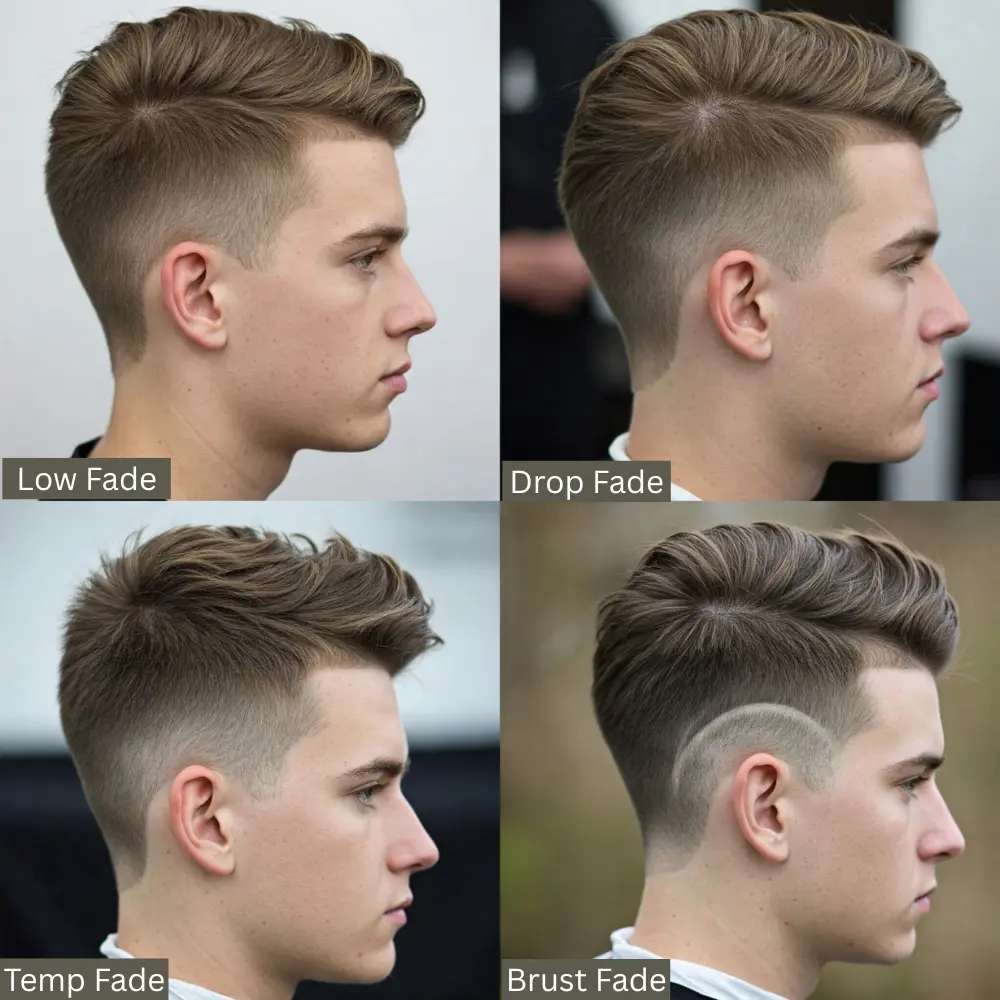
High Fade Haircut Characteristics:
High Fade Haircut Best For:
High Fade Haircut Pairs Well With:
Low Fade vs Mid Fade vs High Fade
When comparing low, mid, and high fades, one of the biggest factors is the level of contrast they introduce between the top and the sides. A low fade preserves more of the side hair, making it ideal for blending into fuller styles, while the high fade drastically reduces the visual weight on the sides, allowing the top to stand out more prominently. The mid fade strikes a balance by providing structure without being too bold. Each fade can create a completely different silhouette depending on how it interacts with head shape, density of hair, and the way the top is styled.
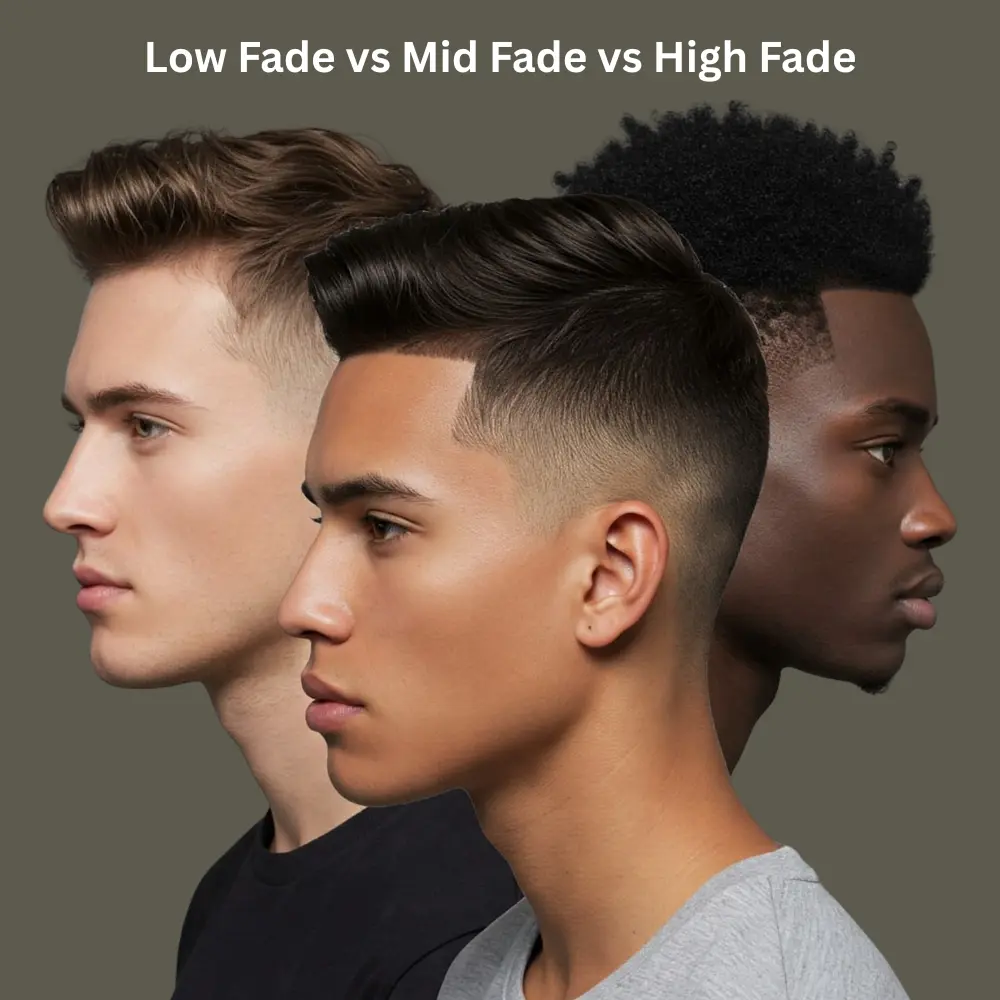
Cultural and lifestyle preferences also play a role in choosing between these fade styles. Low fades are commonly preferred in more conservative or professional circles, whereas high fades have become iconic in sports, streetwear, and fashion-forward communities. Mid fades often serve as a transition for those exploring fades for the first time or aiming for flexibility. Ultimately, it’s not just about the length of the fade but the message it sends — subtle sophistication, modern balance, or bold confidence.
Fade Cut Comparison
| Feature | Low Fade | Mid Fade | High Fade |
|---|---|---|---|
| Start Point | Just above ears | Midway between temple/ear | Near temples or top |
| Look | Subtle and professional | Balanced and stylish | Bold and edgy |
| Maintenance | Low | Medium | High |
| Hair Retention | Most on sides | Moderate on sides | Least on sides |
| Best for Face Shape | Oval, Square | Round, Heart | Diamond, Angular |
| Barbershop Popularity | Very common | Highly requested | Growing in trend |
| Key Characteristics | Soft blend, neat edges | Balanced, face-slimming | Bold contrast, clean lines |
Skin Fade vs Taper Fade vs Drop Fade
While discussing fades, it’s essential to clarify some other fade types often confused with the main three:
How to Choose Between Low, Mid, and High Fade?
When choosing the right fade, consider the following factors:
1. Face Shape: Low fades work best with angular faces, mid fades balance out round faces, and high fades highlight bold features.
2. Hair Texture: Curly hair pairs well with low or mid fades, while straight or fine hair benefits from high fades for volume.
3. Lifestyle & Work Environment: Professionals may prefer low fades for subtlety, while creatives or younger individuals might lean toward high fades.
4. Maintenance Willingness: High fades need more frequent touch-ups, while low fades grow out more naturally.
Styling Products and Tips
Your fade is only as good as how you style it. Here’s what to use:
Regular trims (every 2–3 weeks) keep the fade clean and fresh
Best Haircuts for Each Fade Type
1. Low Fade Styles:
2. Mid Fade Styles:
3. High Fade Styles:
Different Types of Fade Haircuts
Fade haircuts have evolved far beyond just low, mid, and high placements. Today, barbers and stylists offer a wide range of fade styles that allow for creative expression, tailored grooming, and individual flair. Whether you prefer something bold and edgy or clean and understated, there’s a fade type that can match your personal style and lifestyle needs.
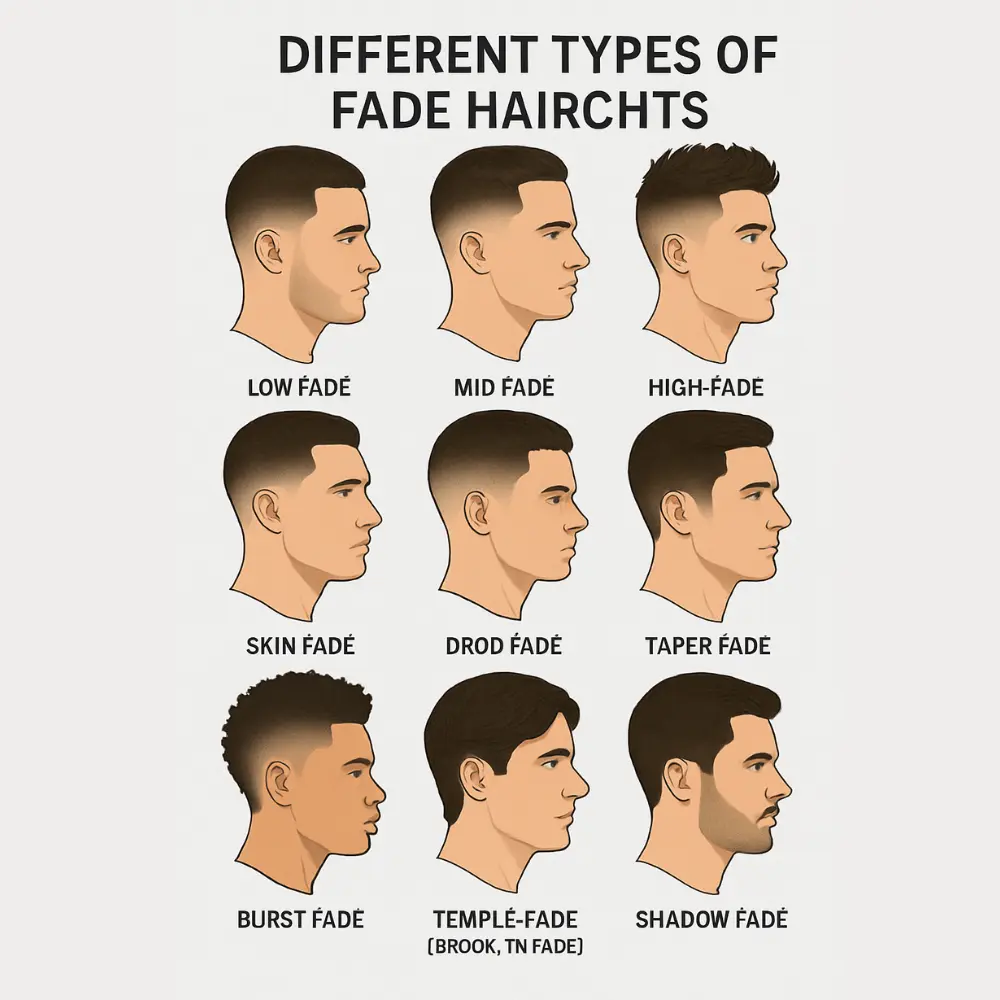
Frequently Asked Questions
Final Thoughts
Choosing between a low fade, mid fade, or high fade depends on your face shape, lifestyle, and personal style. Each offers a unique vibe, whether it’s clean and professional, balanced and trendy, or bold and sharp. Once you know the difference, the decision becomes much easier. Consult with a skilled barber, communicate your preferences clearly, and keep up with regular maintenance. Your fade is more than just a haircut, it’s a statement.

